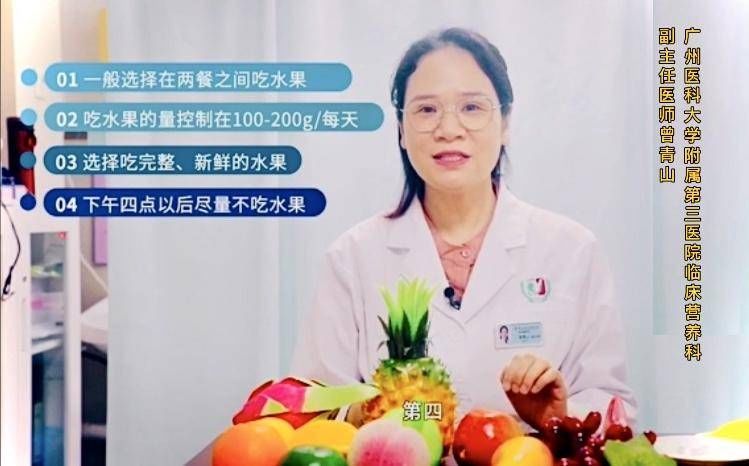“Fruit is not a taboo for obese people or diabetics.” Zeng Qingshan, deputy chief physician of the Clinical Nutrition Department of the Third Affiliated Hospital of Guangzhou Medical University, suggested that obese or diabetic patients should choose low glycemic index (low GI) and low For fruits with low glycemic load (low GL), the key is to eat in limited quantities.

How can the above two types of people eat fruit properly? She gave the following suggestions:
1. The time to eat fruit is usually between meals, such as 9:00 am to 10:00 am, or 3:00 pm to 4:00 pm. Try not to eat fruit after 4pm every day. In a word, obese people and diabetics should not eat fruit immediately after a meal. On the one hand, it can avoid blood sugar fluctuations. On the other hand, fruit contains relatively high sugar content. If you eat fruit just after a meal, the increased energy intake will not be enough. Timely consumption may become stored up as fat. As a snack, fruit not only satisfies appetite, but also relieves hunger and keeps blood sugar stable.
2. The daily amount of fruit should be controlled between 100 grams and 200 grams. If you eat more fruit, you should reduce the amount of staple food accordingly. For example, if you consume 200 grams of apples, you should reduce the staple food by 25 grams (about 1/4 of the usual flat bowl of rice).
3. Choose whole fresh fruit, less or no juice, canned fruit, etc. The GI value (glycemic index) of food is not always the same, the same ingredients will change the GI value due to different maturity and cooking methods. The finer the processing, the softer the texture, and the easier it is to chew, the faster the digestion and the higher the GI value. Therefore, if you can eat fruit completely, try not to make juice.
Medical Instructor/Deputy Chief Physician of the Department of Clinical Nutrition, The Third Affiliated Hospital of Guangzhou Medical University, Zeng Qingshan
(Text, Photos/Guangzhou Daily Xinhuacheng Reporter: Weng Shuxian Correspondent: Zhang Xunkai)< /p>